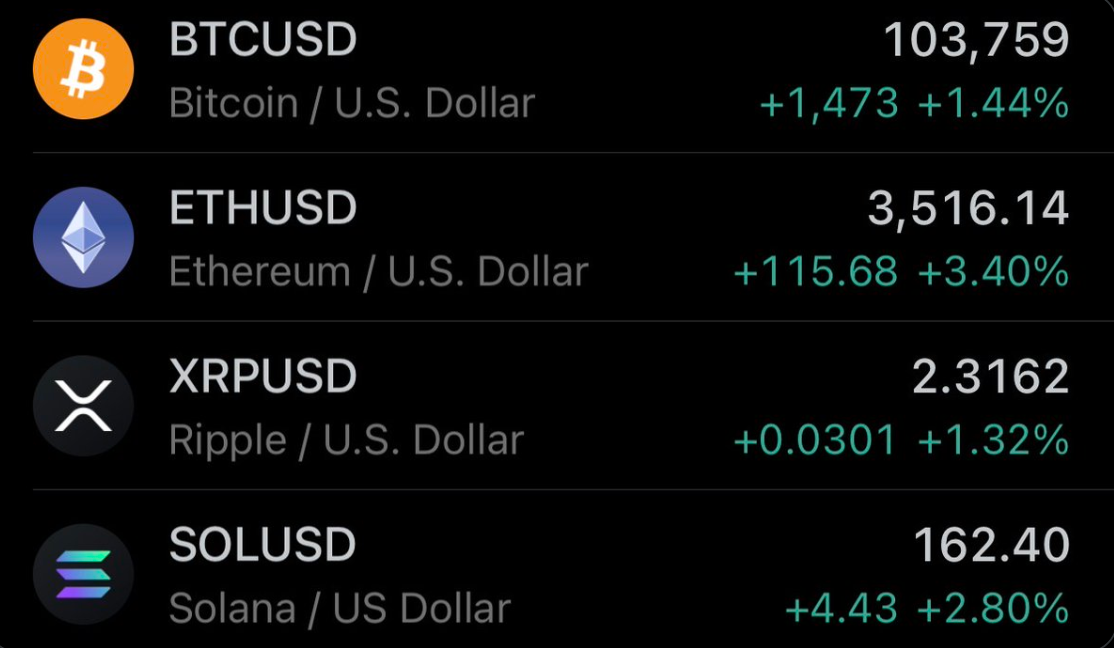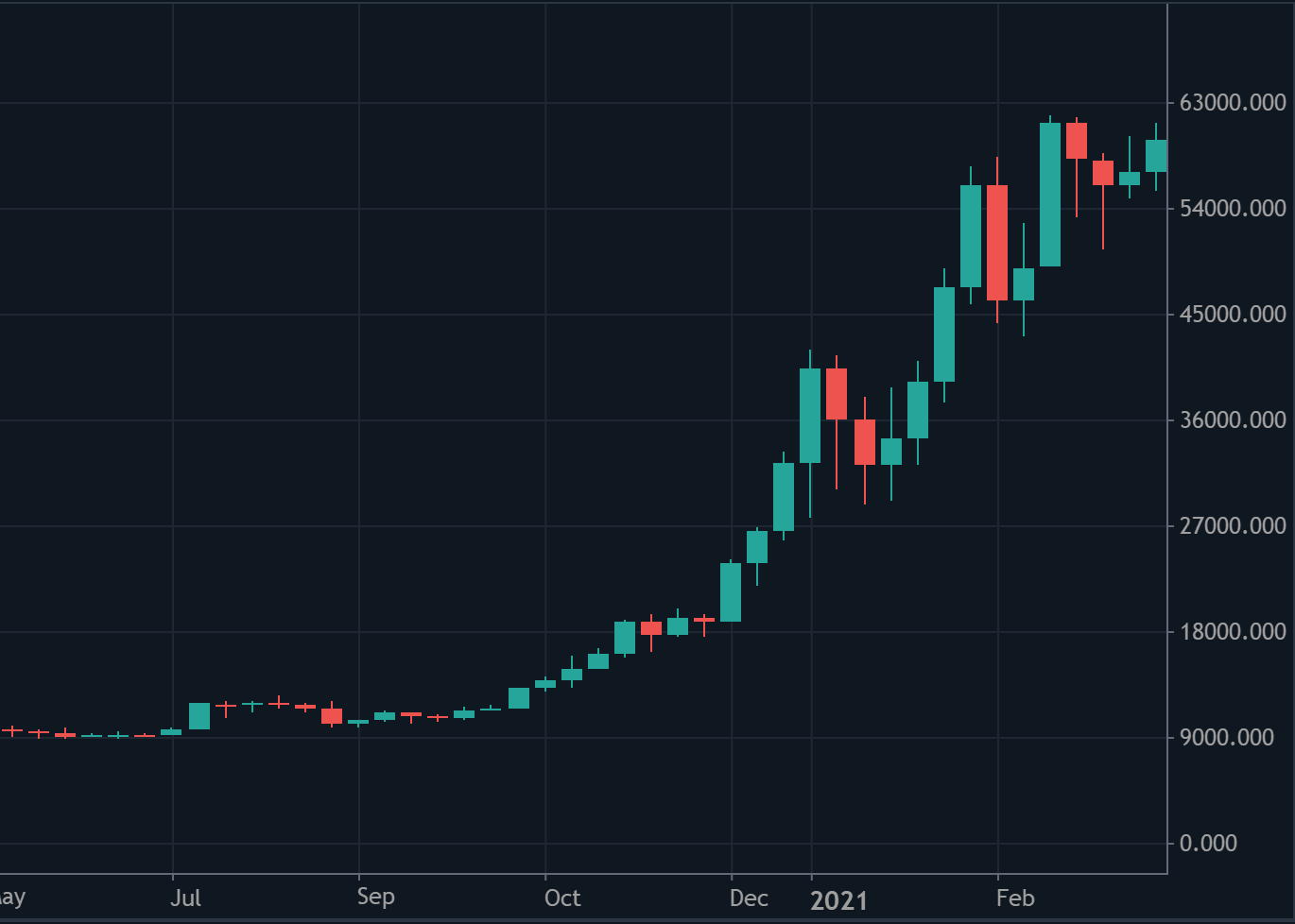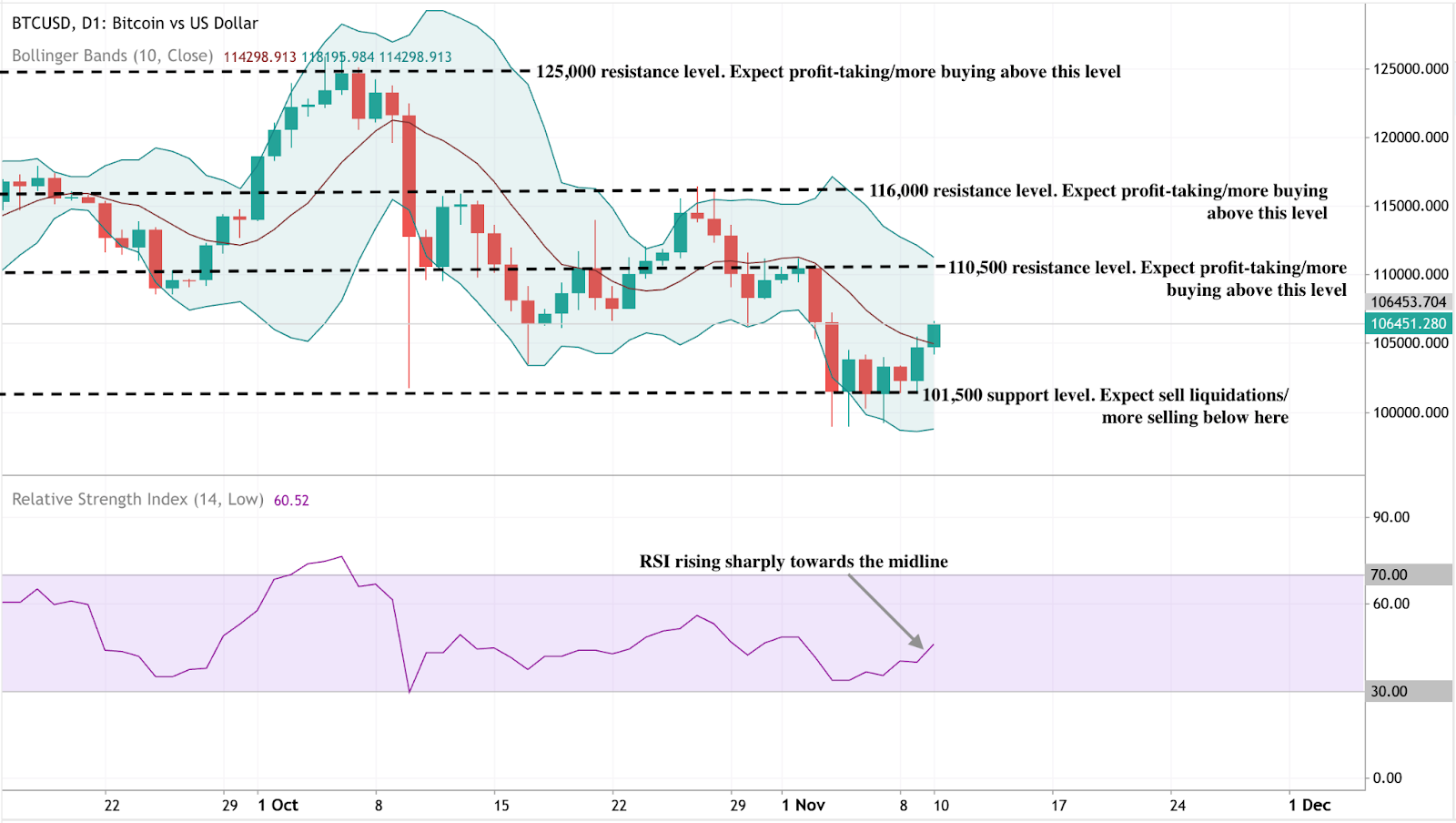Could Trump’s tariff dividend spark a fresh liquidity wave for Bitcoin in 2025?
Could Trump’s tariff dividend spark a fresh liquidity wave for Bitcoin in 2025?
Could Trump’s tariff dividend spark a fresh liquidity wave for Bitcoin in 2025?

Yes - but only in sentiment, not substance. Analysts say President Donald Trump’s proposed $2,000 “tariff dividend” has sparked a psychological liquidity wave rather than a real one.
The announcement sent cryptocurrencies higher, with Bitcoin briefly recovering above $104,000 as traders drew parallels with the 2020 pandemic payments that helped power the last major bull run. Yet with limited fiscal support and legal hurdles ahead, many believe the rally is being driven more by sentiment than substance.
Key takeaways
- Trump’s $2,000 “tariff dividend” sparked a brief surge in Bitcoin and Ethereum, despite lingering doubts about its practicality.
- Fiscal gap: The proposed scheme would cost around $300 billion, whereas current tariff revenues generate only about $90 billion in net revenue.
- Institutional participation remains strong, with over $2.7 billion in ETF inflows and BlackRock’s IBIT managing nearly $100 billion in Bitcoin assets.
- The Federal Reserve’s 25-basis-point rate cut has improved risk appetite and supported Bitcoin above the $100K threshold.
- Analysts see two possible paths: A climb towards $120K–$125K if optimism holds, or a drop below $100K once the political buzz fades.
- Crypto’s dependence on liquidity narratives highlights how sentiment - not policy - often leads price direction in the short term.
Trump’s tariff dividend promise and the market reaction
In a Truth Social post, President Trump claimed that the United States was generating “trillions of dollars” from tariffs and could use those funds to both reduce its $38 trillion national debt and finance a “dividend” for most Americans, excluding high earners.
The post triggered a moderate crypto rally as traders priced in the possibility of more household liquidity.

Markets were quick to draw comparisons with the pandemic-era stimulus payments that ignited a historic bull market. Traders, long conditioned to react to any sign of monetary expansion, responded instinctively - even though the policy remains more political rhetoric than fiscal reality.
Why the maths don’t add up
Despite renewed excitement, the numbers tell a less inspiring story. Fiscal experts emphasise that Trump cannot unilaterally authorise such payments; they would require Congressional approval and a formal budget allocation.
The funding shortfall is significant:
- A $2,000 payment for roughly 150 million adults would cost about $300 billion.
- Tariff collections currently total $120 billion, and after adjusting for slower economic growth and reduced tax receipts, net revenue sits closer to $90 billion.
As Erica York, Vice President of Federal Tax Policy, explained: “Every dollar raised through tariffs offsets roughly 24 cents in income and payroll tax revenue.” This means the government lacks both the fiscal capacity and the legal authority to deliver such a programme - making a near-term payout highly unlikely.
Stimulus Déjà Vu: Why markets still care
Crypto’s reaction has less to do with fiscal logic and more with liquidity psychology. Even without tangible policy action, the mere suggestion of a “dividend” revives traders’ belief that new money could flow into risk assets.
It’s a familiar story. In 2020, stimulus cheques coincided with a surge in Bitcoin and altcoins as retail investors funnelled surplus cash into digital assets.

Although this episode is smaller in scale, it demonstrates the same dynamic - markets still move on liquidity cues, whether real or imagined.
Traders using Deriv MT5 have been quick to respond, leveraging advanced charting and multi-asset analysis tools to navigate crypto volatility and spot trends across correlated markets.
Bitcoin ETF inflows and structural strength
Beyond political theatre, Bitcoin’s structural outlook remains robust. Institutional inflows into U.S. spot Bitcoin ETFs have surpassed $2.7 billion since early November, led by BlackRock’s IBIT and Fidelity’s FBTC. IBIT alone now holds $80.47 billion, cementing its position as the fastest-growing ETF in U.S. history.
Broader macroeconomic conditions also look supportive:
- The Federal Reserve’s 25-basis-point rate cut has improved market liquidity and encouraged risk-taking.
- Trump’s pardon of Binance founder Changpeng Zhao has been read as a gesture towards a more favourable crypto policy stance.
- Thailand and Malaysia exploring Bitcoin as part of national reserves signal rising global adoption.
These factors suggest that even if Trump’s “dividend” plan fails to materialise, Bitcoin’s liquidity narrative remains intact.
Market impact and price scenarios
If ETF inflows persist and monetary policy remains accommodative, Bitcoin could extend its gains towards $120,000, supported by institutional accumulation and broader liquidity optimism.
Conversely, if sentiment cools or macro headwinds strengthen, a pullback below $100,000 remains possible as traders reassess risk.
For now, Bitcoin’s ability to remain above $100K reflects confidence among institutional investors - though analysts warn that belief, rather than balance sheets, is still driving the market.
Bitcoin technical insights
Bitcoin’s recent recovery indicates that buyers are gradually regaining control after defending the $101,500 support level. This area remains pivotal - a sustained drop below it could trigger wider liquidations. On the upside, resistance levels stand at $110,500, $116,000, and $125,000, where profit-taking is expected to intensify.
Bollinger Bands have narrowed following a period of high volatility, pointing to potential consolidation before the next decisive move. The price is also moving closer to the middle band (the 10-day moving average), suggesting an improving short-term structure.
The RSI (14) has risen to around 60, signalling growing bullish momentum without entering overbought territory. A push above 70 would confirm renewed market strength.

Investment implications
For traders, sentiment remains the dominant short-term driver. Bitcoin’s $ 100,000 level continues to serve as a psychological boundary between confidence and caution.
Those trading crypto on Deriv MT5 can access detailed charting tools and multi-market insights, allowing them to monitor correlations between Bitcoin, gold, and major currencies - a valuable approach during politically driven volatility.
Meanwhile, the Deriv Trading Calculator can help traders estimate potential profit, margin, and swap costs before entering a position, improving risk control in volatile conditions.
- Short term: Tactical opportunities exist above $102K–$104K if ETF inflows remain robust.
- Medium term: Expect price swings linked to political developments and central bank decisions.
Long term: Institutional buying and gradual global adoption continue to support a bullish structure, even if enthusiasm cools temporarily.
The performance figures quoted are not a guarantee of future performance.















